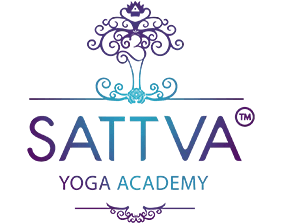Master Level Yoga Teacher Training: Achieving Mastery in the Art of Yoga
06 September, 2023
Introduction
In today's fast-paced world, the importance of holistic well-being and a balanced lifestyle cannot be overstated. Yoga, an ancient practice that originated in India, has gained tremendous popularity worldwide for its ability to promote physical, mental, and spiritual harmony. As more individuals seek to deepen their understanding of yoga and share its benefits with others, the demand for Master Level Yoga Teacher Training programs has soared. In this article, we will explore the intricacies of such training, shedding light on its significance, content, and the path to becoming a certified master level yoga teacher.
The Evolution of Yoga Teaching
Yoga has evolved over centuries, from its humble origins in ancient India to becoming a global phenomenon. As a result, the teaching methods and the depth of knowledge required for yoga instructors have also expanded. Master Level Yoga Teacher Training programs are designed to cater to this evolving landscape of yoga education.
Understanding Master Level Yoga Teacher Training
Master Level Yoga Teacher Training goes beyond the basics of yoga instruction. It equips individuals with a profound understanding of yoga philosophy, advanced postures, meditation techniques, and the ability to customize yoga sessions for diverse populations. Here are the key components of such training:
1. In-Depth Yoga Philosophy
At the master level, yoga instructors delve deep into the philosophical aspects of yoga, studying ancient texts like the Yoga Sutras. They explore the spiritual dimensions of yoga and learn how to incorporate these teachings into their classes, providing a holistic experience for their students.
2. Advanced Asanas and Alignment
Master level training involves mastering advanced yoga poses and understanding the intricacies of body alignment. This enables instructors to guide students safely through challenging postures and correct misalignments effectively.
3. Meditation and Mindfulness
Meditation is a core element of yoga, and master level training emphasizes various meditation techniques. Instructors learn how to lead guided meditations and help their students achieve mental clarity and inner peace.
4. Anatomy and Physiology
A comprehensive understanding of the human body is essential for yoga instructors. Master level training includes in-depth studies of anatomy and physiology to ensure instructors can adapt practices for individual needs and prevent injuries.
5. Teaching Methodology
Master level yoga instructors learn advanced teaching methodologies. They acquire skills in class sequencing, adjusting, and effective communication to create engaging and transformative yoga sessions.
The Path to Mastery
Becoming a master level yoga teacher is a journey that requires dedication, commitment, and continuous learning. Here are the steps one can follow to embark on this transformative path:
1. Earn a Yoga Teacher Certification
Before pursuing master level training, aspiring instructors must complete a foundational yoga teacher training program. This typically involves a 200-hour certification, providing the fundamentals of yoga instruction.
2. Gain Teaching Experience
After obtaining basic certification, gaining practical teaching experience is crucial. Teaching regular yoga classes helps instructors refine their skills and connect with students on a deeper level.
3. Choose a Master Level Program
Select a reputable Master Level Yoga Teacher Training program that aligns with your goals and values. These programs often require a minimum of 300 hours of training and cover advanced topics in depth.
4. Immerse Yourself in Learning
Master level training is immersive and intensive. Be prepared to dedicate time to your studies, attend workshops, and practice regularly to deepen your understanding of yoga.
5. Certification and Beyond
Upon completion of the master level program, you will receive certification as a Master Level Yoga Teacher. This credential will open up opportunities to teach advanced classes, workshops, and even train future yoga instructors.
Conclusion
Master Level Yoga Teacher Training is a transformative journey that enables individuals to become true masters of the art of yoga. It equips instructors with the knowledge, skills, and wisdom to guide their students on a profound journey of physical and spiritual growth. As yoga continues to impact lives around the world, the role of master level yoga teachers becomes increasingly significant.
Frequently Asked Questions (FAQs)
-
What is the difference between basic yoga teacher training and master level training? Master level training goes deeper into yoga philosophy, advanced postures, and teaching methodologies, preparing instructors for a more comprehensive yoga education.
-
How long does it take to complete a Master Level Yoga Teacher Training program? Master level programs typically require a minimum of 300 hours of training, which can vary in duration depending on the program and individual pace.
-
Is there a specific prerequisite for enrolling in a master level program? Yes, most programs require participants to have completed a 200-hour foundational yoga teacher training certification.
-
Do I need to be an expert yogi to enroll in master level training? While a strong foundation in yoga is essential, master level training is designed to enhance your expertise and deepen your knowledge.
-
What career opportunities are available for master level yoga teachers? Master level yoga teachers can teach advanced classes, lead workshops, and even train aspiring yoga instructors. Additionally, they often have opportunities for international retreats and collaborations.

